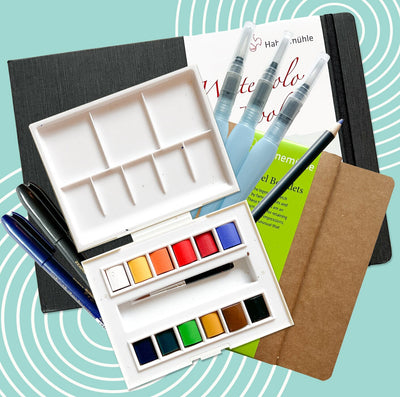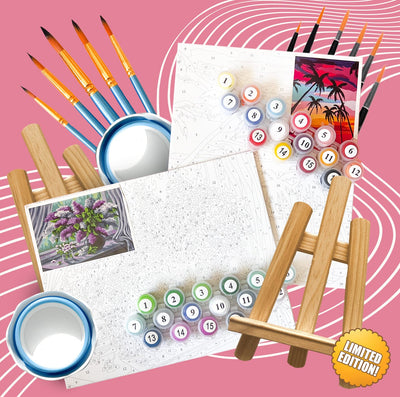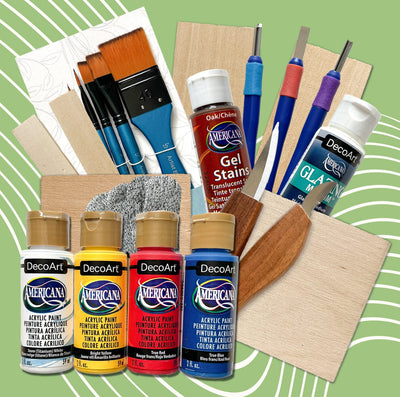Get Inspired: What to Paint Based on the Classics
By Amy Hand
--
Oh boy you folks are in for a treat this month! After dipping your toes into Asian art with block printing from Japan last month, this month we’re sailing across to China to explore Chinese brush painting.
It might surprise you to find out that, when this technique first started, it came about because of calligraphy. This famed writing technique made its start in Asia with the Chinese version being known as shūfǎ or fǎshū. Chinese brush painting used the same principles of varying line weights that calligraphy did but, instead of crafting words, it birthed beautiful art. We’re really excited for you all to dive into this underrated technique and discover its true potential.
Now, the hardest part of starting a new project, I find, is what to paint. The age old dilemma of being presented with a blank page and not knowing where to start. But don’t worry, we’re here to help you out. As always we have our trusty prompts in the box which are: crane, swim, panda and jump. These are a great starting off point as movement and nature are staples in Chinese brush painting but here we are going to try to get a little more in depth which might just help you take your art to a whole new level.
We’re going to go back in time and look at what the pioneers of this unique technique decided to depict and take inspiration from the subjects that most called to them. Before we do that though there are a few things to keep in mind.
The beauty of this technique is that it's all in the brush. The strokes and the control you have on them; varying pressure and how you load up the brush; is what creates the shapes. It’s not so much about inking in precise lines that outline your subject but rather varying the lines to create swooping shapes that give you the impression of what you’re painting; capturing its essence if you will. Line weight and how they flow from one thickness to the other is how you will tell your story. If you want to add in extra fine details you can do that later with the glass tip pen, before that you want to not overthink it and approach the medium in a different way to the way you would with acrylics or oils.
So, with that in mind, let’s look back in time and see what helped Chinese brush artists make their mark.

In the Beginning
The main aim of the artists in this period was to express their spirit through simple natural forms that spoke of their innermost ideals. Using the medium of line weights the artist could make their strokes strong and dark or thin and light; traversing between the two to forge something magical. They captured their subjects in their truest form; using the most minimal of lines and economy of movement to reduce them down to their simplest components. Most of these classic brush paintings would be flowers, birds, animals and landscapes. Not only were these attractive and popular, they also lend themselves perfectly to this form of painting.
Now let’s take that inspiration and see what you can do with it!
Keeping it Simple
As with all new mediums or techniques, it’s always good to start simple. Composition and creating a scene can be a challenge in and of itself so starting with simple, individual things is a good way to start.
A gnarled branch laden with cherry blossoms, a sitting panda or an elegant crane; they may be simple but they will give you just enough of a challenge to really get you going. Flowers are also a wonderful jumping off point as you can take advantage of the shape of the brush to create the petals. If you are ever stuck with where to start when painting plant life it might help to think about how the flower itself grows and work your piece from there as this will dictate how the petals interact with one another. Remember, it’s always a good idea to work from a reference but that doesn’t have to be photos from far away places. You could use an object from around your house that will make your art personal and truly your own.
Once you feel like you mastered the basics you can now take this knowledge and start devising some more complex scenes by combining these individual elements together. Let’s take a look at how.

Animals and Plant Life
Combining plant and animal life in a Chinese brush painting scene is a no-brainer. It looks beautiful and you get the opportunity to play with the various textures and colors to shape something spectacular.
Why not try a crane standing in a pond filled with lotuses and lily pads? This will give you the dramatic flourish of the crane’s shape to play with along with petal shapes and water ripples to let you really put your new skill to the test.
You could also try the classic panda with bamboo that puts this sweet bear in its natural habitat while contrasting it with the woody stem and thin leaves of its favorite food. This thought process would also work by painting colorful koi fish in a pond filled with drifting water plants and luminous algae.
At home you could try painting your pet with your favorite houseplant. Just try not to get bogged down in the details and really let the main shapes be your guide.
When you are painting be sure to take it slow and layer one color at a time. To create scenes with more movement and depth the layering of colors is very important so be sure to plan your next move carefully before diving in. Creating a patchwork of leaves or flower petals in slightly varied shades, maybe even the same color watered down a little, will help you build a scene that looks dynamic and complex in its simplicity.

Layered Landscapes
If animals seem a little too daunting then maybe a good landscape is what will really get your blood pumping. Landscapes are a great way to practice both lineweight and shade that really make the piece pop. They may seem simple but a well crafted landscape can be a very satisfying piece to make. The trick is all in the layers. Just plonking a mountain in the distance isn’t going to result in a dynamic piece that you’re really proud of, you really need to consider your composition and work with the foreground and background to create something interesting.
To create that dynamism you want something in the background, maybe in the middle distance, but definitely something in the foreground to really ground the piece. Try a scene of a mountain with a cherry blossom tree in the foreground or a scene from nearby where you live with a similar feeling. You can go in with larger strokes in paler hues for the objects in the background while, in the foreground, you can go with some more delicate brushstrokes and even some little details with your glass tip pen. This will let you bring all the skills you’ve learned together into something thoughtful and pleasing on the eye.
And there you have it, a little bit of inspiration to get your creative juices flowing. From traditional Chinese imagery to the objects sitting in your house waiting to be painted; you can find a way to be inspired by almost anything! All you need to do is usually break the scene down into its simplest forms and let its essence ring true in the form of a Chinese brush painting.
I hope that little dive into the muses of the artist's past have inspired you to make great art for yourself with this month’s wonderful box. We can’t wait to see all your creations!
Take a Break with Smart Art Every Month!



